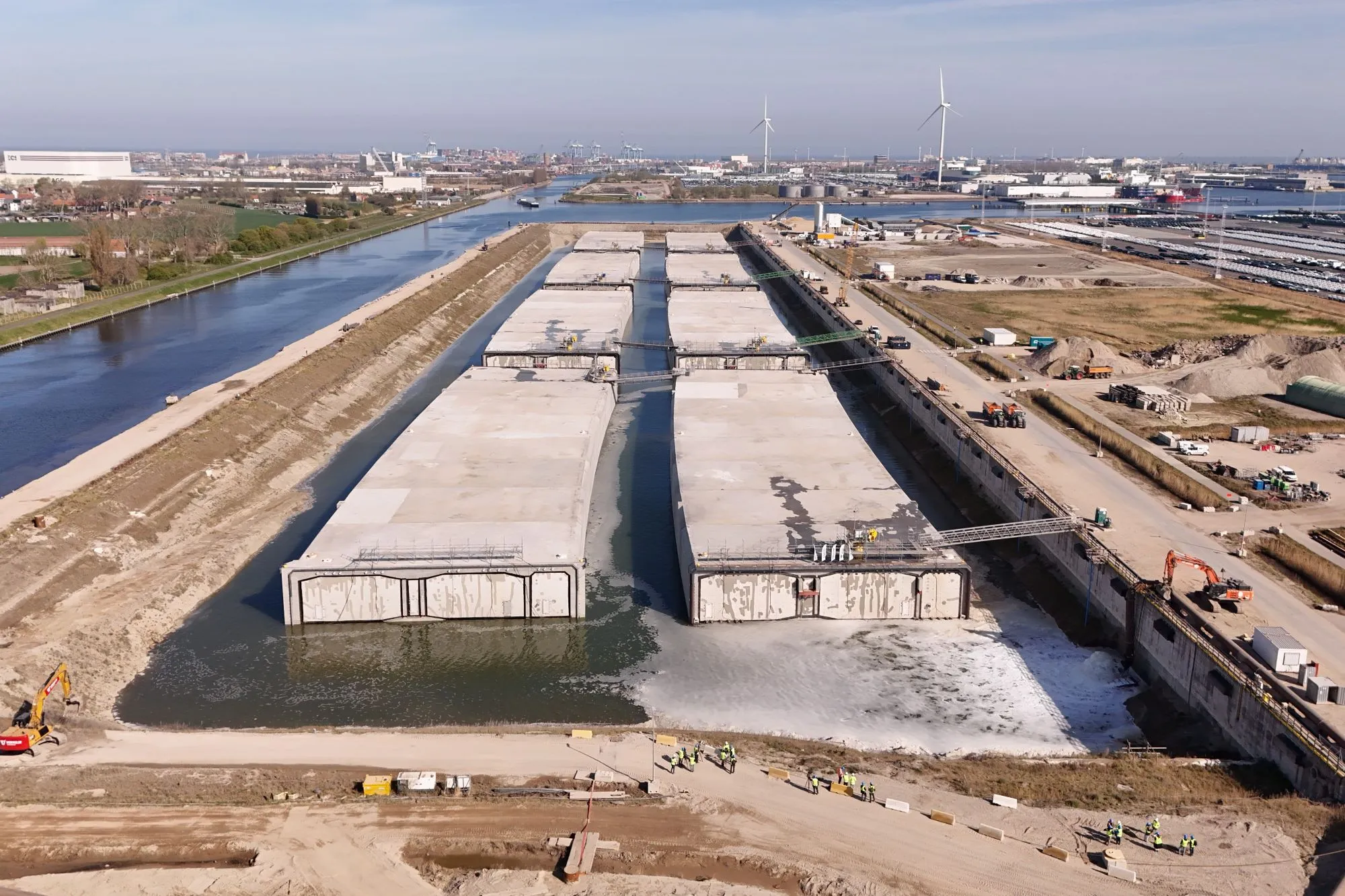Work is moving forward on Belgium’s 1.8km Scheldt tunnel. Workers recently floated the concrete elements for the immersed tunnel at a dock in Zeebrugge. They are now preparing them for transport to Antwerp.
Project factsheet
-
Project name: Scheldt Tunnel – Oosterweel Connection
-
Length: 1.8 km
-
Location: Antwerp, Belgium
-
Tunnel type: Immersed road tunnel under River Scheldt
-
Lanes: 3 in each direction
-
Other features: 6m-wide bicycle tube and escape tube
-
Contractor: THV COTU (Deme, Besix, BAM Contractors, Jan De Nul)
-
Designer: Infranea (part of VK Architects & Engineers)
-
Contract value: €570 million (£488 million)
-
Opening: Traffic by 2030, bicycle tube by 2028
The tunnel is part of the wider Oosterweel link. This project will close the northern gap in Antwerp’s Ring Road. It is being developed by Lantis for the Flemish government.
Each tunnel element is 160m long, 42m wide, and 10m high. They weigh around 60,000 tonnes. Because the tunnel path curves under the river, each section has a slightly different shape.
After two years of construction, the team has now started flooding the dock with 800,000 cubic metres of water. Once floating, the eight elements will travel over 100km to Antwerp via the North Sea and the Western Scheldt.
The first segment is expected to begin its 30-hour journey in May. There, it will be placed into a pre-dug trench in the river.
READ ALSO: Implenia and HOCHTIEF win Tunnel Ostbahnhof contract for Munich S-Bahn project
Riverbank works progress on Belgium’s 1.8km Scheldt tunnel as teams build local links and protect natural areas
Meanwhile, work is ongoing on both riverbanks in Antwerp. COTU is building local tunnel sections to connect the floating elements. To do this, teams closed the Scheldt dyke temporarily, drained the area, and dug 25 metres deep.
On the left bank, the tunnel starts further inland to protect natural areas like mudflats and salt marshes. This design also gives the river more room to prevent flooding.
In a statement, BAM said the team is “well aware of the challenges” due to the “technically difficult environment.” But the partners are confident that their experience will ensure success.
This Belgium’s 1.8km Scheldt tunnel is expected to open for road traffic in 2030. However, the bicycle tube could be ready by early 2028.
In addition to the tunnel, the Oosterweel project includes new road infrastructure on the right bank and all tunnel systems. That part of the contract was awarded in 2021 to the TM ROCO consortium.
The right bank will link the tunnel to the R1 motorway. Crews will build this section in a cutting and partly cover it to improve traffic flow and reduce noise.

Leave a Reply